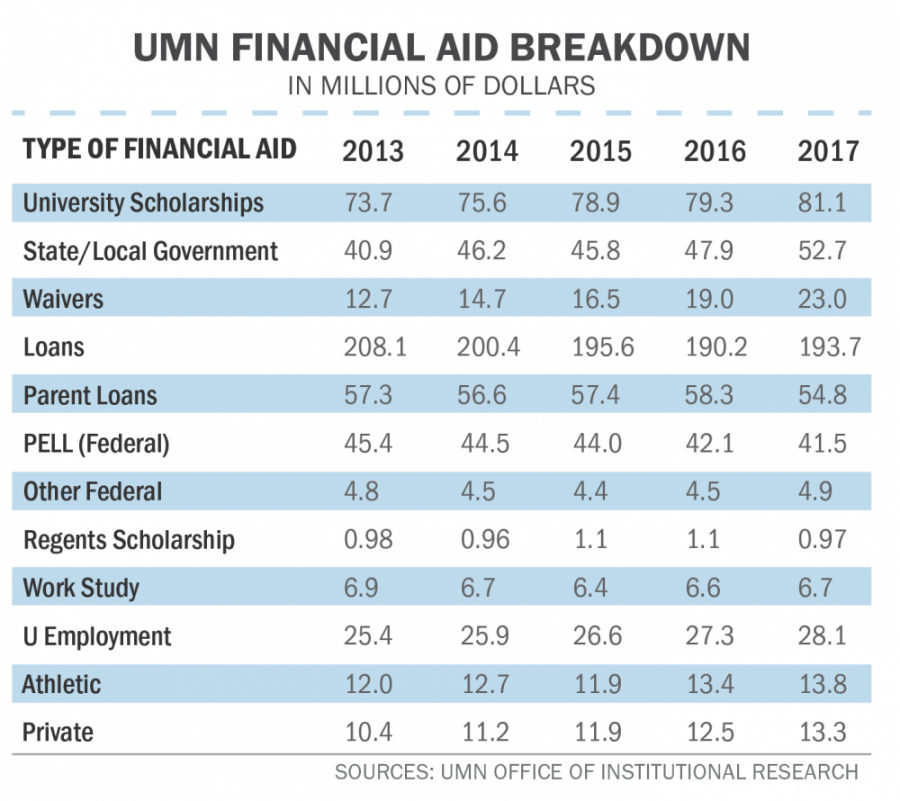The amount of total financial support available to University of Minnesota undergraduate students saw a significant boost in the last year.
Increases in scholarship dollars, along with funding from the state and tuition waivers at the University system, played a key role in the $12 million boost in 2016-17, bringing last year’s total to $514,744,546 in financial support, said Vice Provost and Dean of Undergraduate Education Bob McMaster.
The jump in overall financial support cannot be attributed to one single factor.
“There’s a story, and sometimes an even complicated story, category by category,” McMaster said.
About $2 million extra in scholarship dollars, $5 million in state and local government funding and $4 million in waivers played a key role in accumulating last year’s total financial support, McMaster said. Funding for financial support from state and local government rounded out at about $53 million last year, a figure that has steadily been rising.
The Minnesota State Grant Program, which is central to college affordability in the state, projects another $4 million going to the University from the government in the coming year, said Meredith Fergus, who manages financial aid research for Minnesota’s Office of Higher Education.
House higher education committee Chair Rep. Bud Nornes, R-Fergus Falls, said the University asked for more money than it received.
“It isn’t that we’ve said, ‘Here, take more money,’ it’s because the [University] system has said, ‘we need more money’,” Nornes said. “We’ve tried to do as much as we can [and] we have not actually… lived up to the expectations of the requests that [the University has] had.”
Fergus stressed the upcoming Minnesota elections as key for the future of state funding for the University.
“Tuition at the University is probably going to keep going up, so it’s important that we keep up with that so that students don’t have to pay more money because the legislators [are] not doing their part,” Fergus said.
Last year’s jump in overall financial support also ties to University waivers, such as those meant to attract academically proficient out-of-state students to the University, McMaster said.
Sam St. Amant, a University junior from California, said receiving an out-of-state tuition waiver made it easier to come to the midwest for college.
St. Amant pointed out that problems with the waiver system lie with a lack of standard quality education around the country, prompting some students to look for better options away from their home states.
“Obviously schools benefit from getting good students, so it makes sense that [universities] want good students because that’s how they get better programs and better funding,” St. Amant said.
McMaster said looking forward, University goals include continuing to prioritize the increasing pool of money for student scholarships and decreasing loans students take out to pay for college.








